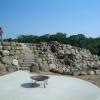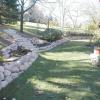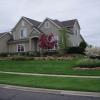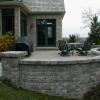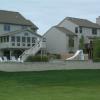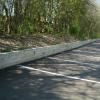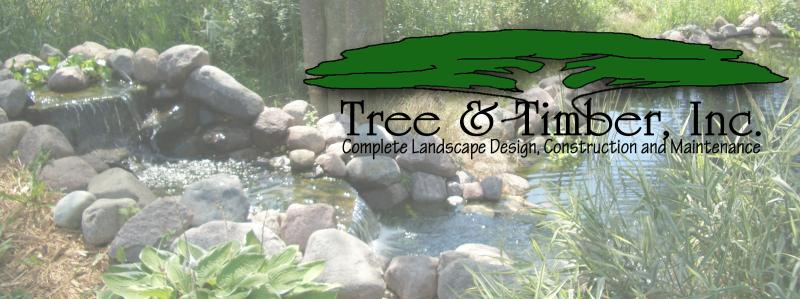
Retaining Walls
Retaining walls come in a wide variety of materials. Depending on its use (strictly decorative or structural) the material can range from pressure treated timbers (wood) to concrete block, granite boulders to large outcropping stone. While there are many different types to choose from, some work better than others in particular situations.
Concrete segmented retaining walls offer the highest degree of holding power when installed correctly. Some block is designed to go as high as 4’ without additional engineering, meaning the use of geo-grid material is unnecessary. All of our walls are backfilled with washed stone to ensure proper drainage, since the most common reason for failure is hydrostatic pressure behind the wall. Most walls also receive a perforated drain tile at the base to conduct excess water out from behind the wall. With the popularity of this type of wall, engineers and manufacturers have come a long way in designing these systems to be more aesthetically pleasing while increasing the holding power. This type of wall is generally far less expensive than poured concrete or natural stone walls that require mortared joints.
Natural stone walls can be some of the most striking additions to the landscape, whether they are necessary to retain ground or simply create a grade change to add interest. Some outcropping stone is used individually or in small groupings as purely decorative, while stacking them can withhold large embankments or elevate areas as needed.
Boulder walls are among the least expensive but most difficult to reliably engineer to withhold critical areas that could cause damage or injury should the wall shift. For that reason, our boulder walls are most often used as decorative walls or lower impact retaining walls.
Finally, timber walls are comparably inexpensive, but have lost favor with most of the population due to the longevity of product itself. While recent innovations in pressure treatment chemicals have made it safer to use, wood inherently is not considered a permanent product, usually lasting 10-15 years before showing signs of decay and rot. Rail road ties are also included in this group, but may last longer than timbers. We are reluctant to use R/R ties due to the chemicals (creosote) used as a preservative and the impact to the environment they may have.
If you have any specific questions about retaining walls, or would like an estimate for your project, please contact us and we’ll be happy to help!
Boulder Walls
Outcropping Retaining Walls
Concrete Block Walls
Timber Walls
(Click on images to view)
